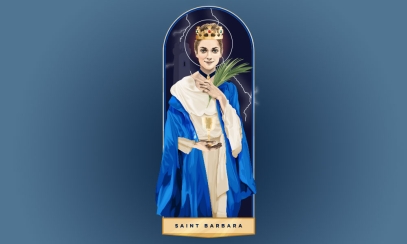St. Charles Borromeo, A Tireless Reformer
Feast Day: November 4
Born amidst the turmoil of the Protestant Reformation and troubled sixteenth-century Italy, Charles Borromeo set his sights on reform from a young age, and helped to reinvigorate the Church during the Counter-Reformation. Born into a wealthy and powerful family in northern Italy in 1538, he joined the ranks of the clergy at age 12. While preparing for a career in the Church, Charles was given the income from a rich Benedictine abbey by an uncle, and he insisted that all funds not used for his education be given to the poor.
When Charles was 25, he was ordained a priest and consecrated as bishop of Milan. For several years after this appointment, however, he lived in Rome as an assistant to his uncle, Pope Pius IV. In this capacity, Charles played an important role in the Council of Trent. The council codified Church doctrine and brought about significant reform of abuses. Charles was instrumental in helping theologians work through differences in doctrine and keeping the council unified.
When the council ended and Charles moved to Milan to fulfill his duties as bishop, the Church in Milan was in turmoil. As the largest archdiocese in Italy at the time, corruption was rampant among clergy, and Charles instituted significant reforms there. He traveled to the far corners of the diocese to teach Church theology and doctrine, and encourage transformative change. Although his efforts were met with fierce resistance, Charles pressed on. He modeled the reforms he preached within his own household, which was disciplined and thrifty.
Aside from his penchant for reform, Charles’ pastoral nature was evident throughout his life. During a plague in Milan in 1576, he remained in the city and helped tend to the sick, and personally went into debt to assure that thousands of people were fed. He also is credited with establishing orphanages, seminaries and hospitals. Charles gave up a life of wealth and luxury to serve the Church, and is remembered for his intellect and energy. He was canonized in 1610.



